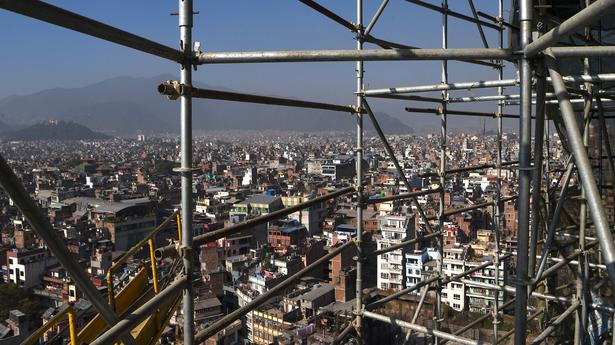
Alarm bells over Nepal’s dwindling forex reserves
The Hindu
What has led to loss of remittances? What are the external factors pushing Nepal towards double digit inflation?
The story so far: In an unusual development, the government of Prime Minister Sher Bahadur Deuba sacked the head of its central bank, Maha Prasad Adhikari, last Friday accusing him of leaking sensitive information and for failing to perform his duties. The decision, which violates the autonomy of Nepal Rastra Bank, was taken in the backdrop of tense relations between Finance Minister Janardhan Sharma and Mr. Adhikari over how to address Nepal’s crisis of falling forex reserves. According to an April 12 report on the ‘Current Macro Economic and Financial Situation’ by Nepal Rastra Bank, the country’s forex reserves have plummeted by 18.5% to $9.58 billion in March from $11.75 billion in July 2021. The current forex reserves are enough to pay the government’s import bills only for the next seven months or so, say experts.
Nepal’s economy is highly dependent on imports as the country buys a range of merchandise goods apart from fuel. The prevailing weak economic indicators mean that Nepal is spending from its forex reserves faster than it can save. Renowned Nepalese economist Bishwambhar Pyakurel, former head of the Department of Economics of Tribhuvan University in Kathmandu, contends that Nepal will soon have double-digit inflation. “If current trends continue then double-digit inflation will hit us by June/July,” said Dr. Pyakurel. According to the Nepal Rastra Bank, the current rate of inflation is 7.14%.
Nepal’s forex reserves situation appears healthy as of now as the country, unlike Sri Lanka, is not burdened by external debt. There are, however, concerns that the lower middle income economy is being battered repeatedly by external factors and that may precipitate a crisis sometime soon. Nepal which is blessed with one of the finest tourism sectors in South Asia, because of the Himalayan mountain range, suffered during the COVID-19 pandemic as global tourist flow fell. This was followed by the global energy crisis caused by Russia’s invasion of Ukraine. This has put extraordinary inflationary pressure on the economy. Dr. Pyakurel says all economic indicators are declining and the real shortfall in forex reserves is because of the decline in foreign remittances which suffered during the pandemic when the Nepalese work force abroad suffered job losses. The situation has not stabilised and Nepal’s forex reserves continue to slide. Dr. Pyakurel points out that it’s not time to panic but warns, “We have enough forex for buying merchandise just over seven months. This does not look good as we also have a balance of trade crisis with major partners.”
Nepal’s primary supplier of energy is Indian Oil Corporation (IOC). Nepal Oil Corporation (NOC) pays IOC in two instalments every month, on the 8th and the 23rd. The NOC has been in crisis for months as high global prices depleted the company’s savings, prompting it to approach the government for a lifeline. The Government of Nepal has agreed to provide NOC the necessary amount to continue supplies from IOC. There were concerns in Kathmandu about the payment due on April 23, but for the time being sufficient funds have been allocated to NOC to pay IOC for the next instalment. However, NOC’s financial status makes it unattractive for banks and as a result the public sector company does not enjoy confidence in the market. Dr. Pyakurel, however, says there is a need to protect NOC from the effects of the current energy crisis in the world which has erupted after the Ukraine crisis. Nepal’s history shows that any uncertainty regarding fuel can trigger serious internal problems as was visible during the 2015-16 blockade when disruption of fuel supply from India caused distress in Nepal.
Nepal will hold local level polls on May 13 which will be followed by general elections towards the end of the year. The election process requires considerable financial allocation and Nepal has received support in the past for elections from international donors like the USAID. These donors help in carrying out pre-election staff training and logistics that are part of any democratic process. But there are uncertainties about such international support because of the difficulties that most of the traditional partners are facing. Dr. Pyakurel said the Election Commission of Nepal will require at least 10 billion Nepali rupees for the election process and that will mean diversion of a large amount of resources for the democratic process.
Nepal’s political process will begin from May when the Nepali Congress will be challenged by the Communist Party of Nepal (UML). The political dynamics are partly responsible for the friction between finance minister Janardhan Sharma and the suspended Rastra Bank chief appointed by the previous government of Prime Minister K.P. Sharma Oli, who was in power till July 2021. Mr. Sharma, a former Maoist commander, belongs to the Pushpa Kamal Dahal ‘Prachanda’–led Maoist Centre of the ruling alliance. Dr. Pyakurel points out that the political bickering may have been a contributory factor to the worsening economic situation.













